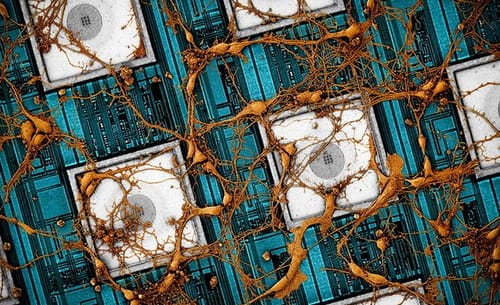 |
| Samsung offers a vision for copying and pasting brains onto chips |
Samsung has shared a new vision to bring the world closer to making neural chips that can better simulate the brain.
The vision was created by the company's senior engineers and researchers and Harvard University and published in the journal Nature Electronics Copy-and-Paste Neuroelectronics.
The main points of the author's vision can be summed up in two words at best: "copy" and "paste".
The article proposes a method to use advanced nanoelectrode arrays to reproduce the neural connectivity map of the brain and insert the map onto a high-density 3D solid-state storage array, a world-first Samsung technology.
Using this cut-and-paste method, the author plans to develop a memory chip that will be able to approximate the brain's unique computational properties: low power consumption, easy learning, adaptability, independence and cognitive skills—otherwise current technology is impossible.
The brain consists of a large number of neurons whose circuit patterns are responsible for brain functions. So understanding the map is key to re-engineering the brain.
Also Read: Galaxy Watch 4 vs Galaxy Watch 3 Comparison
The original goal of neural engineering introduced in the 1980s was to simulate the structure and function of neural networks using silicon chips. This has proven difficult as not much is known about the number of neurons that are linked together to create higher brain function.
Hence, the goal was achieved to design neural shapes to design chips that were inspired by the brain rather than being strictly imitated.
This article proposes a regression method toward the original goal of neuromodulation, which is used to reverse engineer the brain. Networks of nanoelectrodes can effectively penetrate large numbers of neurons and record their electrical signals with high sensitivity.
Samsung has a better way to develop brain chips
These large-scale parallel recordings teach intracellular neural wiring. This indicates where neurons connect to each other and how strong those connections are. Therefore, neural wiring diagrams can be extracted or transcribed from these excitatory recordings.
The copied neural graph can then be pasted over a network, such as a commercial flash drive into an SSD, or a resistive RAM. It does this by programming each memory so that its connection represents the strength of each neural connection in the replicated board.
The article went further and suggested a strategy for quickly introducing a neural line graph into a storage network. Since the human brain has an estimated 100 billion neurons, its synapses are a thousand times larger. An ideal neural chip requires 100,000 billion storage units.
With 3D memory integration, a large amount of memory can be combined on a single chip. This is a technology led by Samsung.
In addition to his pioneering experience in the wafer industry. Samsung plans to continue its research in neurotechnology. The goal is to expand its leadership position in the field of the next generation of semiconductors for artificial intelligence.